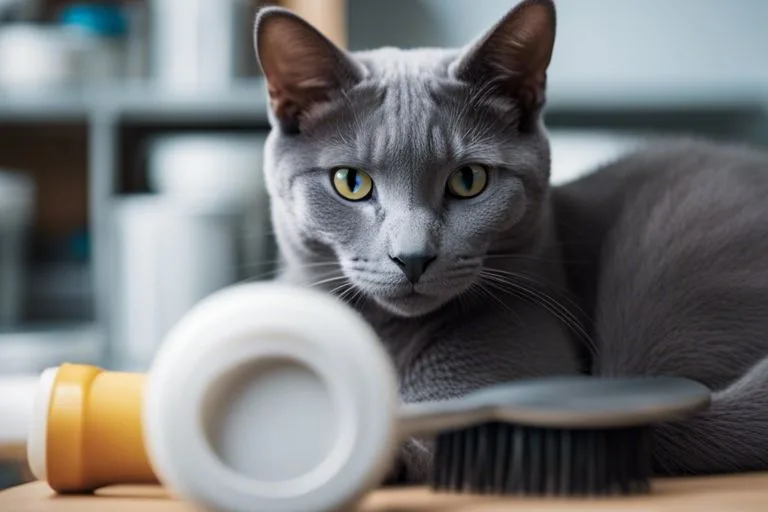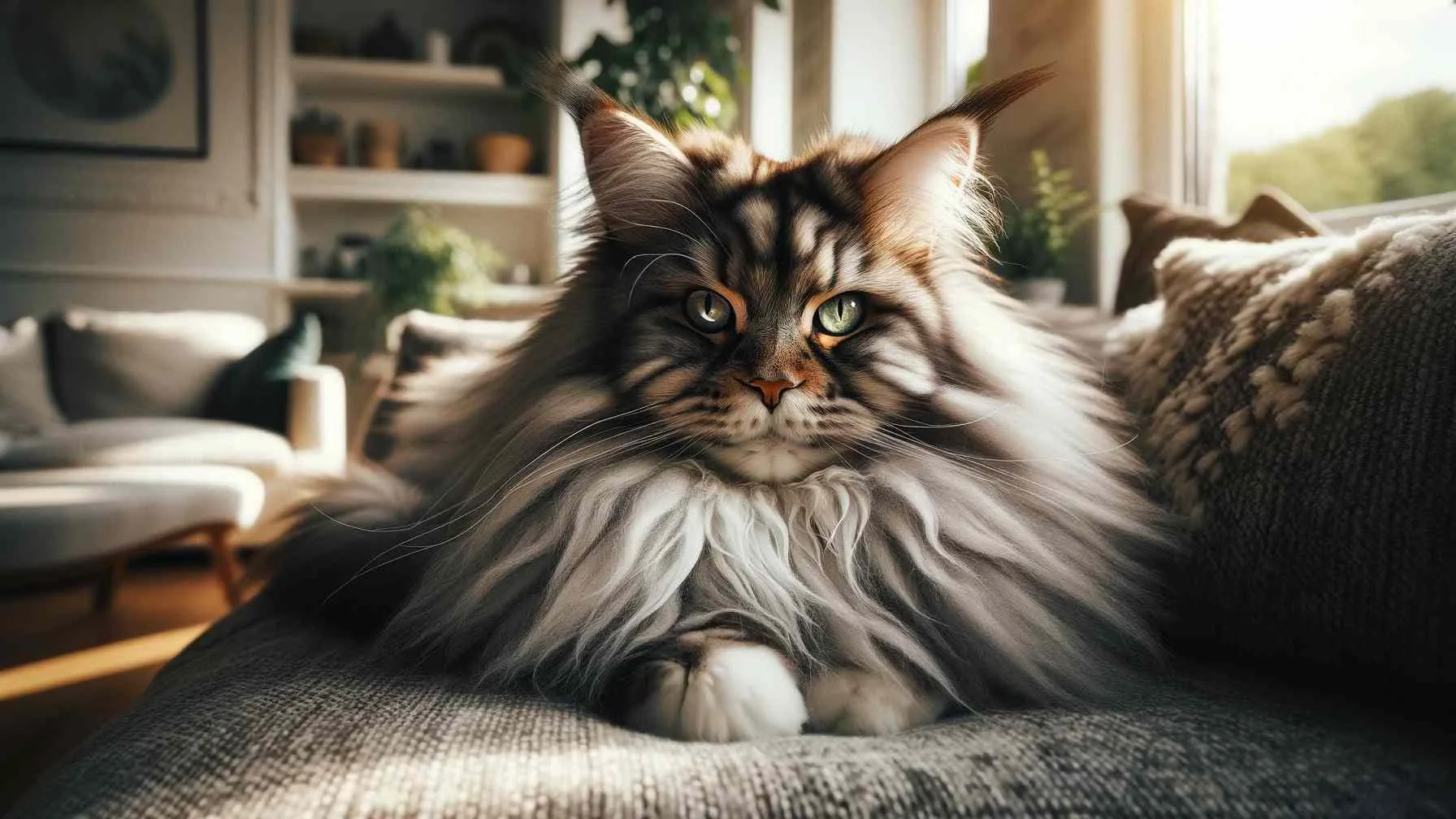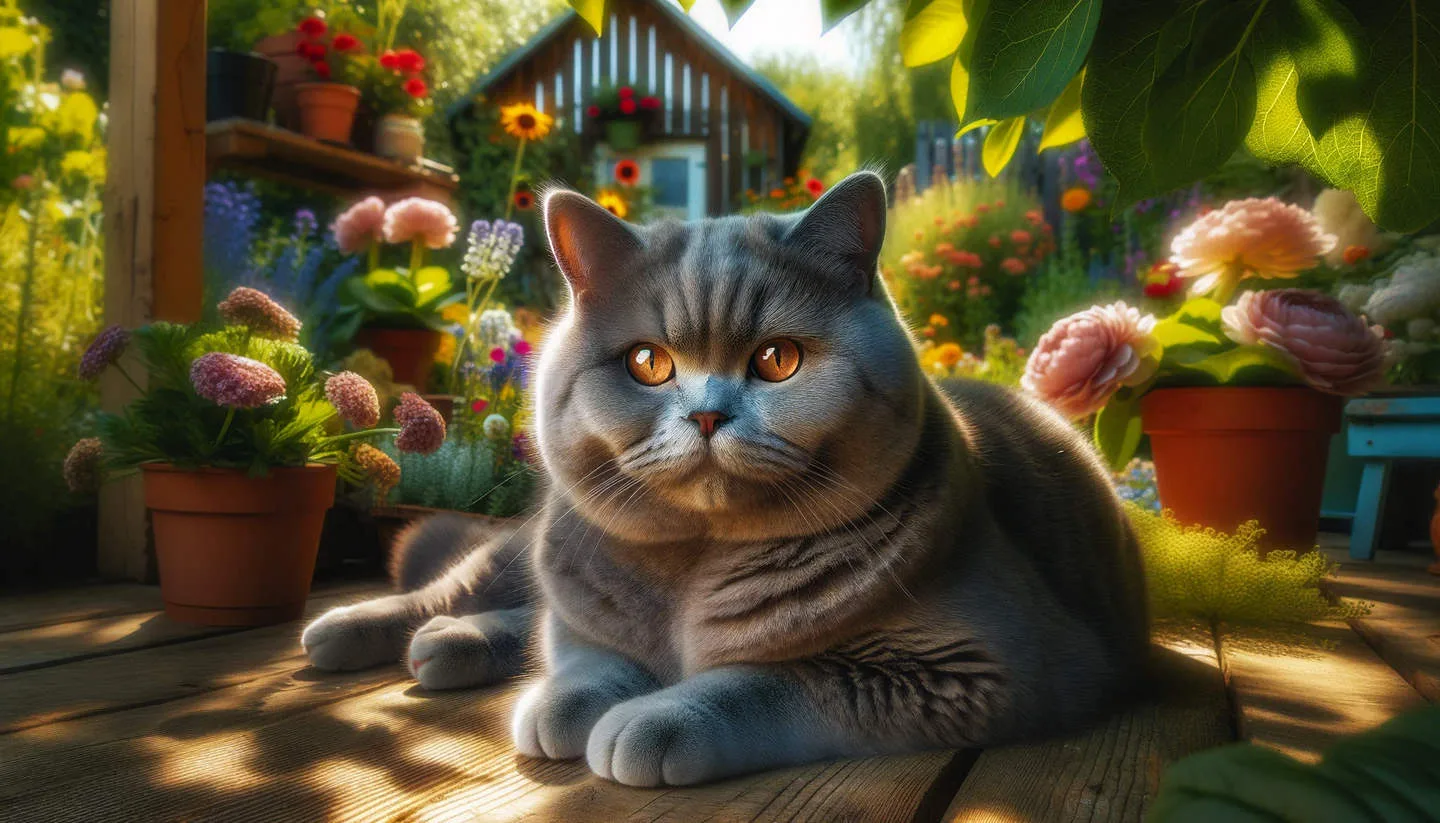Have you ever wondered why your Russian Blue cat is experiencing hair loss on its tail? This peculiar condition, known as tail-tail alopecia, can cause concerns for many pet owners. In this article, we’ll delve into just how common this issue is in Russian Blue cats, and what potential causes and solutions are available. To understand the root of this problem, it’s important to recognize the signs and symptoms and seek professional advice. If you’re looking for more information about this issue, you can also check out this article on Russian Blue pulls off his hair on the sides of his body, legs ….
Key Takeaways:
- Russian Blue cats are prone to tail alopecia due to their genetic predisposition to stress.
- Environmental changes, such as moving to a new home or the introduction of a new pet, can trigger tail alopecia in Russian Blue cats.
- Diet and grooming can play a significant role in preventing and managing tail alopecia in Russian Blue cats.
- It is important for owners to monitor their Russian Blue cat’s behavior and seek veterinary care if they notice any signs of tail alopecia.
- While tail alopecia is relatively common in Russian Blue cats, it can be managed with proper care and attention.
The Prevalence of Tail Alopecia in Cats
If you have noticed your Russian Blue cat experiencing hair loss on their tail, you may be wondering just how common this condition is among cats in general. Tail alopecia, or hair loss, can be attributed to a variety of causes in felines, which can make it difficult to determine the exact prevalence of the condition across all breeds.
General Incidence in Felines
Generally, tail alopecia is not uncommon in cats. It can be caused by a range of issues such as allergies, parasites, hormonal imbalances, infections, or even stress. For most cats, the condition is not dangerous and can often be resolved with proper treatment. However, in some cases, it can be a sign of an underlying health issue that requires attention from a veterinarian. It’s important to monitor your cat’s tail regularly for any signs of hair loss and consult with a professional if you notice any concerning changes.
Russian Blue Cats Specifics
When it comes to Russian Blue cats, tail alopecia may be more common than in other breeds. Due to their genetic makeup and predisposition to certain health conditions, Russian Blue cats may be more susceptible to experiencing hair loss on their tails. While this may not necessarily pose a serious threat to their health, it’s important to keep an eye on this issue and consult with a veterinarian to rule out any potential health concerns. Your vigilance and proactive approach to your cat’s health can make a significant difference in their overall well-being.
Causes of Tail Alopecia in Russian Blue Cats
Assuming you are concerned about the tail alopecia in your Russian Blue cat, it’s important to understand the potential causes of this issue. While tail alopecia can occur in any cat breed, Russian Blues are particularly prone to it due to a combination of genetic, environmental, and behavioral factors. By understanding these factors, you can take steps to mitigate the issue and keep your cat as comfortable as possible.
Genetic Factors
When it comes to tail alopecia in Russian Blue cats, genetic factors can play a significant role. The breed’s genetic makeup may predispose them to certain skin conditions and hair loss. Genetic predisposition to conditions such as Feline Endocrine Alopecia and Dermatomyositis can lead to hair loss, including on the tail. Additionally, Russian Blue cats may be more prone to shedding due to their genetics, which can contribute to tail alopecia.
- Feline Endocrine Alopecia
- Dermatomyositis
Assume that these genetic factors may be beyond your control, but recognizing them can help you take steps to manage tail alopecia in your Russian Blue.
Environmental and Behavioral Factors
In addition to genetic factors, environmental and behavioral factors can also contribute to tail alopecia in Russian Blue cats. Stress, anxiety, and boredom can lead to excessive grooming and self-induced hair loss, particularly on the tail. This can be exacerbated by environmental changes, such as moving to a new home, the introduction of a new pet or family member, or changes in routine. This excessive grooming can result in hair loss and tail alopecia. This may sound counterintuitive, but excessive grooming can also be a sign of stress or discomfort in your cat. This behavior can become a vicious cycle, as further hair loss can lead to increased stress and anxiety.
- Stress
- Excessive grooming
This is why it’s important to address any environmental or behavioral factors that may be contributing to your cat’s tail alopecia.
Diagnosis and Treatment
For Russian Blue cats, diagnosing and treating tail alopecia requires the expertise of a veterinarian. Tail alopecia in Russian Blue cats can be tricky to diagnose, as it may have various underlying causes. Therefore, it is essential to seek professional help to determine the root cause of the condition and develop an appropriate treatment plan.
Veterinarian Diagnostic Techniques
When you bring your Russian Blue cat to the veterinarian for a diagnosis, they will conduct a thorough physical examination to assess the extent of the hair loss and look for any other symptoms that might indicate an underlying health issue. They may also perform skin scrapings, blood tests, and other diagnostic procedures to rule out conditions such as allergies, parasites, or hormonal imbalances. In some cases, a skin biopsy may be necessary to obtain a definitive diagnosis.
Common Treatments and Preventative Measures
Once the veterinarian has identified the underlying cause of tail alopecia in your Russian Blue cat, they will recommend a treatment plan tailored to your cat’s specific needs. This may include topical or oral medications to address any skin infections, dietary changes to improve overall skin and coat health, or management of underlying conditions such as allergies or hormonal imbalances. Preventative measures may include regular grooming, a balanced diet, and flea control to help maintain your cat’s skin and coat health.
Owner’s Guide to Tail Alopecia Management
Noticing tail alopecia in your Russian Blue cat can be concerning, but there are steps you can take to manage the condition and ensure your feline friend stays happy and healthy. Tail alopecia can be a common issue in Russian Blue cats, and knowing how to manage it is important for their well-being. Here’s a guide to help you take care of your cat’s tail alopecia.
Daily Care Recommendations
When managing tail alopecia in your Russian Blue cat, it’s important to pay attention to daily care recommendations. This includes regular grooming and hygiene practices. Make sure to brush your cat’s tail gently to remove loose fur and prevent matting. Additionally, keeping your cat’s environment clean and free of irritants can help reduce the likelihood of further irritation to the tail area. It’s also a good idea to provide your cat with a balanced diet and plenty of water to support overall skin and coat health.
When to Seek Veterinary Help
While you may be able to manage your Russian Blue cat’s tail alopecia at home, it’s important to know when to seek veterinary help. If you notice increased redness, swelling, or discomfort around the affected tail area, it’s best to consult your veterinarian as soon as possible. They can provide a professional assessment and recommend appropriate treatment options. Your veterinarian can also help rule out any underlying health issues that may be contributing to the tail alopecia.
Conclusion
On the whole, tail alopecia in Russian Blue cats is not a common occurrence. However, it is important to monitor your cat’s overall health and behavior and consult with a veterinarian if you notice any changes in their coat or skin. Proper grooming, a balanced diet, and regular veterinary check-ups can help prevent and address any issues related to tail alopecia in your Russian Blue cat. By staying informed and attentive to your cat’s needs, you can ensure their overall well-being and happiness.
FAQ
Q: Is Tail Tail Alopecia common in Russian Blue Cats?
A: Yes, Tail Tail Alopecia is relatively common in Russian Blue cats. It is a condition where the hair on the tail becomes sparse or falls out completely, leaving the tail with bald patches. This can be due to a variety of factors such as genetics, stress, or skin conditions.
Q: How can I prevent Tail Tail Alopecia in my Russian Blue Cat?
A: While there is no guaranteed way to prevent Tail Tail Alopecia, you can help reduce the risk by ensuring your Russian Blue cat has a balanced diet, regular grooming, and minimal exposure to stress. Regular veterinary check-ups can also help identify any potential issues before they escalate.
Q: Can Tail Tail Alopecia in Russian Blue Cats be treated?
A: Treatment for Tail Tail Alopecia in Russian Blue cats may vary depending on the underlying cause. In some cases, addressing any underlying health issues or reducing stress can help improve the condition. Your veterinarian may also recommend topical treatments or supplements to promote hair growth and alleviate any skin irritation. It is important to consult with a qualified veterinarian for a personalized treatment plan for your cat.



